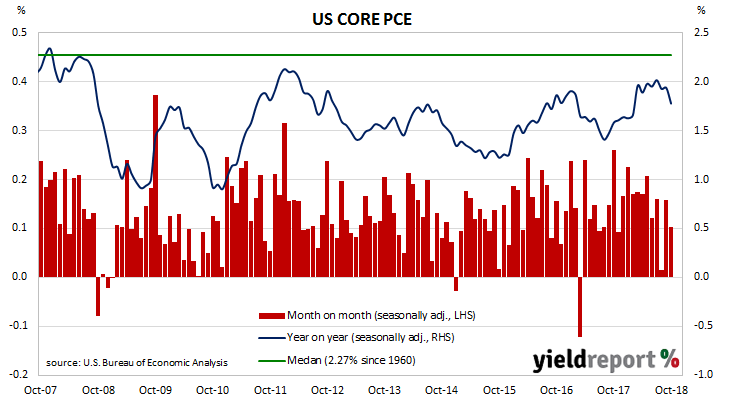One of the US Fed’s favoured measures of inflation is the change in the core personal consumption expenditures (PCE) price index. After hitting the Fed’s target at 2.0% in July, the annual rate then slipped a little in August and September.
The latest figures have now been published by the Bureau of Economic Analysis as part of the October personal income and expenditures report. At +0.1% for the month, core PCE inflation was lower than September’s +0.2% and lower than the +0.2% consensus expectation. On a 12 month basis, the core PCE inflation rate registered 1.8%, a fall from September’s comparable rate of 1.9%. ANZ Head of FX Strategy Daniel Been said the figures confirmed a lack of inflationary pressure in the US. “Despite the tight labour market and recent lift in wages, there is little evidence that inflation is accelerating.”
ANZ Head of FX Strategy Daniel Been said the figures confirmed a lack of inflationary pressure in the US. “Despite the tight labour market and recent lift in wages, there is little evidence that inflation is accelerating.”
The core version strips out energy and food components, which are volatile from month to month, in an attempt to identify the prevailing trend. It’s not the only measure of inflation used by the Fed; it also tracks the Consumer Price Index (CPI) and Producer Price Index (PPI) from the Department of Labor.

